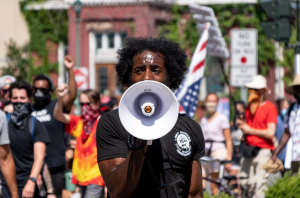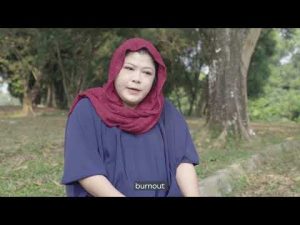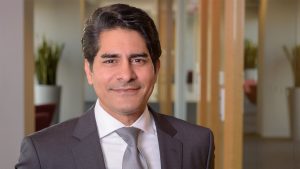Men Can HEAL—Getting Men into the Jobs of the Future

Richard V. Reeves is the founding president of the American Institute for Boys and Men (AIBM) and the author of Of Boys and Men: Why the Modern Male is Struggling, Why It Matters, and what to Do About It. He has been a long-time advocate of sex and gender equality. He says,
“There has been a successful campaign to get girls and women interested in STEM (Science, Technology, Engineering, and Math) professions. By contrast, the men-into-HEAL (Health, Education, Arts, and Literacy) movement is essentially non-existent.”
He goes on to say,
“Getting a good estimate of how much is being spent overall on getting more women into STEM jobs is impossible, not least because so many institutions are involved. But to give one specific example, the Society of Women Engineers has a headquarters staff of 36, about $19 million in assets, and an annual expenditure of $12 million.”
For me, I was lucky to get into one of the healthcare professions early on. After I graduated from U.C. Santa Barbara in 1965, I was accepted at U.C. San Francisco Medical School and was awarded a four-year full-tuition fellowship to attend. I hoped to eventually become a psychiatrist and help men like my father who had a “nervous breakdown” when I was five years old after he had become increasingly depressed when he couldn’t make a living to support his family.
Medicine was primarily a male profession when I first attended medical school and there were few women in my class. But I quickly felt what I was learning was too narrowly focused and lacked emotional engagement and sensitivity. I requested a transfer to the School of Social Welfare at U.C. Berkeley and was willing to give up my scholarship to get it. However, before I was allowed to leave I had to see a psychiatrist. Evidently, a male leaving medical school for a career in social work was seen as aberrant, if not downright crazy.
When I arrived, the other students in social work school were primarily women, with only a few men. But I loved the environment and felt at home in a community committed to helping people mentally, emotionally, and relationally. I also appreciated that we began helping people right away. My first-year placement was at a juvenile probation department. In my second year, I worked in a mental health facility. I earned my Master of Social Work degree in 1968 and have had a successful career ever since.
In Of Boys and Men, Reeves says,
“In broad terms, HEAL occupations can be seen as the opposite of STEM. They are more focused on people, rather than things, and they tend to require more literacy than numeracy skills.”
I found that to be true. I am definitely better suited to HEAL professions and social work has given me experience with people I never would have gotten had I continued in medical school.
The focus on literacy has also helped me to become a successful author with seventeen books available, including international bestsellers Looking for Love in All the Wrong Places: Overcoming Romantic and Sexual Addictions, Male Menopause, and The Irritable Male Syndrome: Understanding and Managing the 4 Key Causes of Depression and Aggression.
In recent years I have been training men who are interested in men’s health as a profession. Reeves says,
“There has been a striking drop in the share of men in mental health related caring professions. Men account for the minority of social workers (18%) and psychologists (22%), for example, and the gender imbalance is growing.”
Yes, Boys Can: An Action Approach For Now and For the Future
What’s to be done? Reeves offers a challenging proposal.
“As a society, we recognized the need to get more women into STEM jobs, and invested accordingly. Now the same is true of men and HEAL. I propose at least $1 billion national investment, over the next decade, in service of this goal. This money, from both government and philanthropy, should be spent in three ways:
- First, creating a pipeline of future male HEAL workers in schools and colleges.
- Second, providing financial support to male students and workers in HEAL.
- Third, running social marketing campaigns to make these career choices more appealing to boys and men.”
Reeves goes on to say,
“First, the pipeline. We need to get more boys and young men thinking about HEAL careers early.”
To that end Reeves has joined with Jonathan Juravich, the 2023 National Elementary Art Teacher of the Year to create a masterful new book, Yes, Boys Can: Inspiring Stories of Men Who Changed the World.
I had the opportunity to interview Richard and Jonathan for a recent podcast which you can watch here. We discussed their work, the creation of the book, and talked about some of the inspiring men who work in the fields of Health, Education, Arts, and Literacy.
You’ll learn about who of the fifty interesting men in the book: Social worker Preston Dyer and health nurse Sir Jonathan Elliott Asbridge.
As described in Yes Boys Can,
“Growing up, the only person that Preston really saw helping other people was the pastor of his church. Preston loved the idea of helping others; it was what drove him. He wasn’t excited about writing and preaching sermons for church services.”
It wasn’t easy, but Preston got into social work helping people with mental health needs. He struggled through school, but persevered. He and his wife, Genie, started marriage enrichment courses and began helping more people. In sum,
“Against all odds and hurdles, he ended up becoming one of the most influential social workers alive.”
Jonathan Elliott Asbridge was born in Cardiff, Wales.
“He had his first taste of nursing when he began work as a cadet with the St. John Ambulance Service in South Wales. He knew at a young age that he wanted to pursue nursing as a career, but his parents were less than excited and strongly fought back. This wasn’t the future they wanted for him.”
Many men are drawn to work in the HEAL professions but are discourage by others. Sometimes it is family members who discourage us. Other times it is teachers, friends, classmates, or the general sense we get from society that these are not manly jobs.
But Jonathan didn’t give up. Jonathan attended nursing school and continued schooling at university and began working in the field.
“Jonathan went from being a staff nurse to a charge nurse in a critical care unit, then an inpatient manager, a general manager, and the director of Clinical Care Services. Eventually he became a director of nursing.
He didn’t stop there. Jonathan continued work with further advocacy and professional advancement and was named the inaugural president of the Nursing and Midwifery Council of the United Kingdom.”
Since at least 1860, on the King’s or Queen’s birthday, individuals are awarded medals, decorations, and appointments. These recognitions celebrate the great works of citizens. As we learn in the book, “On June 17, 2006, Jonathan received such an honor. He was knighted for his dedication to the National Health Service and advancement of the nursing profession. Thankfully, his family’s reluctance about his career choice didn’t hold him back from pursuing his dream.”
If you, or someone you care about, may be interested in HEAL professions for men, I highly recommend Richard’s book, Of Boys and Men: Why the Modern Male is Struggling, Why it Matters, and What to Do about it.” I also recommend the new book, Yes, Boys Can! Inspiring Stories of Men Who Changed the World.
For more information about Richard’s work, visit him at the American Institute for Boys and Men: https://aibm.org/. You can also visit his website: https://richardvreeves.com/
You can learn about Jonathan’s work here:
https://theartofeducation.edu/author/jonathan-juravich
You can order Yes, Boys Can! From the publisher here:
https://quarto.com/books/9780760391952/yes-boys-can or from wherever books are sold.
I write regular articles about men’s mental, emotional, and relational health. You can visit me here: https://menalive.com/ and subscribe to my free weekly newsletter here: https://menalive.com/email-newsletter/








